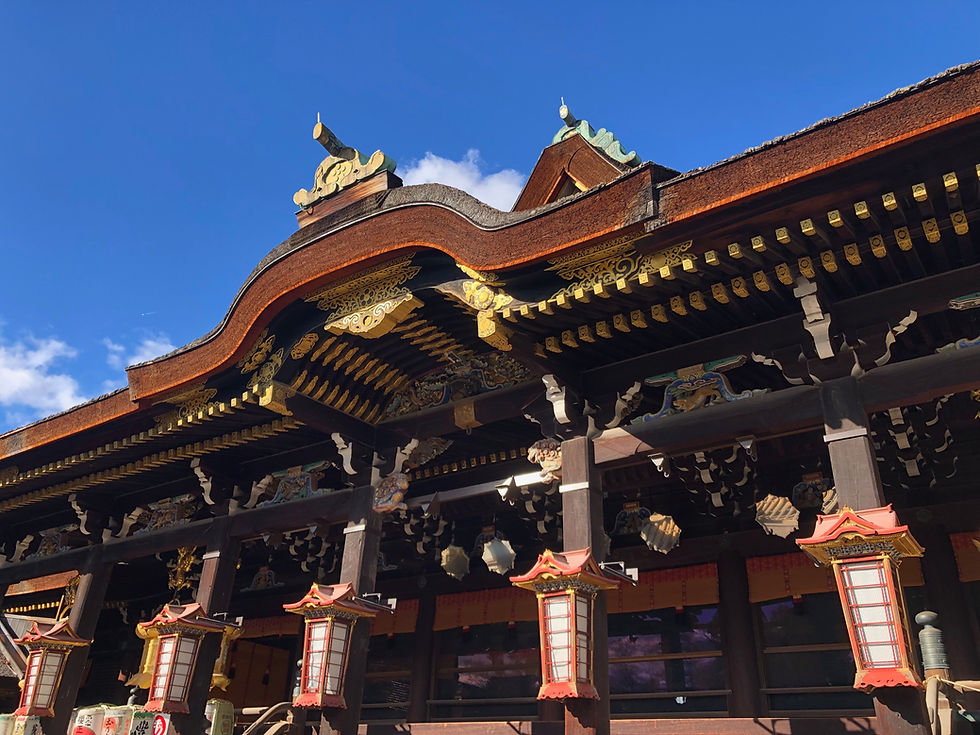Transforming Kyoto's Traditional Spaces into Modern Hotels
- Front Desk

- Oct 13
- 3 min read
Kyoto, a city renowned for its rich history and traditional architecture, is witnessing a fascinating transformation. Traditional spaces such as machiya townhouses and old ryokans are being reimagined as modern hotels. This blend of heritage and contemporary design offers visitors a unique experience that honours the past while embracing the present. This article explores how a KINO SPACE Kyoto approaches this delicate balance, providing practical insights and examples of successful transformations.
The Art of Blending Tradition with Modernity in KINO space Kyoto
Designing hotels in Kyoto requires a deep understanding of the city’s cultural heritage. A KINO SPACE Kyoto focuses on preserving the essence of traditional architecture while integrating modern amenities and aesthetics. This approach respects the original structure and materials, such as wooden beams, tatami mats, and shoji screens, while introducing contemporary comforts like climate control, Wi-Fi, and stylish lighting.
For example, many studios retain the original wooden framework and paper sliding doors but replace the interiors with minimalist furniture and modern bathrooms. This creates a harmonious environment where guests can enjoy the charm of old Kyoto without sacrificing convenience.
Key strategies include:
Using natural materials that complement the original construction
Maintaining the building’s façade and structural integrity
Incorporating modern design elements that do not overpower traditional features
Designing flexible spaces that serve multiple functions

Innovative Approaches by KINO APACE Kyoto
Modern hotel design studios in Kyoto are pioneering innovative ways to transform traditional spaces. One notable trend is the adaptive reuse of machiya, which are traditional wooden townhouses. These buildings often have narrow frontages but extend deep into the block, offering unique spatial challenges and opportunities.
Design studios creatively use these layouts by:
Creating open-plan living areas that maximise natural light
Installing skylights and internal courtyards to enhance ventilation
Using sliding partitions to allow flexible room configurations
Incorporating local crafts and artworks to enrich the guest experience
These innovations demonstrate how a Kyoto hotel design studio can respect tradition while meeting modern expectations.

The Role of kino space kyoto in Revitalising Traditional Spaces
One exemplary project that highlights the transformation of traditional spaces into modern hotels is by kino space kyoto kyoto. This design studio specialises in revitalising old buildings with a focus on sustainability and cultural preservation.
Kino Space Kyoto Kyoto’s approach involves:
Detailed research into the history and original use of the building
Collaborating with local artisans to restore original features
Using eco-friendly materials and energy-efficient systems
Designing interiors that tell a story of Kyoto’s heritage
Their projects often feature a seamless blend of old and new, where guests can appreciate the craftsmanship of traditional carpentry alongside sleek, modern furnishings. This approach not only preserves Kyoto’s architectural legacy but also attracts tourists seeking authentic yet comfortable accommodation.

Practical Tips for Transforming Traditional Spaces into Hotels
For those interested in undertaking similar projects, here are some practical recommendations based on the experiences of KINO SPACE Kyoto:
Conduct thorough structural assessments: Traditional buildings may require reinforcement to meet safety standards.
Respect local regulations: Kyoto has strict rules on preserving historical buildings, so compliance is essential.
Engage local craftsmen: Their expertise ensures authentic restoration and adds cultural value.
Focus on guest comfort: Modern amenities should be integrated without compromising the building’s character.
Use lighting strategically: Highlight architectural features while creating a warm, inviting atmosphere.
Plan for sustainability: Incorporate energy-efficient systems and sustainable materials to reduce environmental impact.
By following these guidelines, developers can create hotels that honour Kyoto’s heritage and appeal to modern travellers.
Embracing Kyoto’s Heritage Through Thoughtful Hotel Design
Transforming traditional spaces into modern hotels in Kyoto is more than a design challenge - it is a cultural mission. A KINOSPACE Kyoto plays a crucial role in this process by balancing preservation with innovation. The result is a unique hospitality experience that connects guests with Kyoto’s history while providing contemporary comfort.
Whether it is a machiya townhouse or an old ryokan, these transformations breathe new life into historic buildings. They also contribute to the sustainable development of Kyoto’s tourism industry by promoting cultural appreciation and environmental responsibility.
For those interested in exploring such projects or staying in these beautifully designed hotels, studios like kino space kyoto kyoto offer inspiring examples of how tradition and modernity can coexist harmoniously.
This evolving trend in Kyoto’s hospitality sector showcases the power of thoughtful design to preserve cultural identity while embracing the future. It invites us all to experience the timeless beauty of Kyoto in a fresh, modern way.




Comments